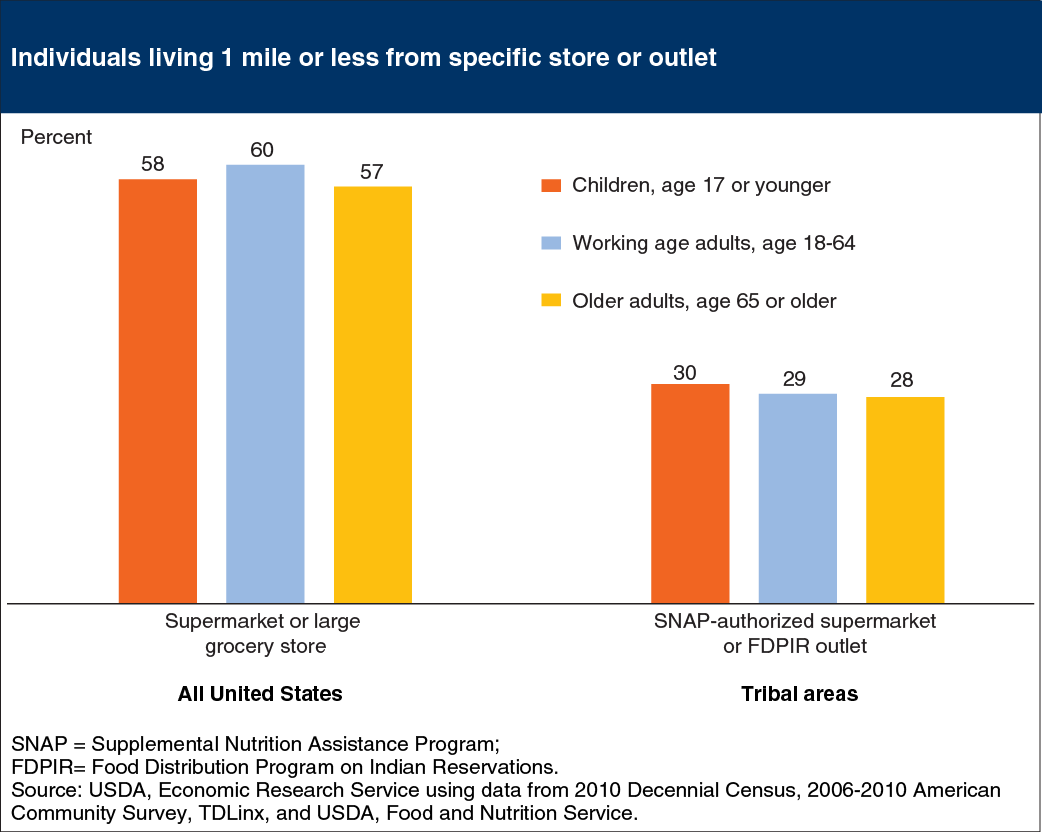Alternative food assistance program operates in Native American tribal areas
- by Michelle Saksena
- 12/11/2015

USDA provides healthful foods to low-income households in Native American tribal areas through its Food Distribution Program on Indian Reservations (FDPIR). Due to access reasons, some households participate in FDPIR as an alternative to USDA’s Supplemental Nutrition Assistance Program (SNAP). Warehouses, tribal stores, and local sites are used to distribute the USDA foods. Households living on tribal lands that qualify for food assistance can switch between SNAP and FDPIR on a month-to-month basis. ERS researchers calculated distances to SNAP-authorized supermarkets and FDPIR outlets in American Indian Tribal Areas, Oklahoma Tribal Statistical Areas, and Alaska Native Village Statistical Areas. They found that 30 percent of children, 29 percent of working-age adults, and 28 percent of older adults in these tribal areas lived 1 mile or less from a SNAP-authorized supermarket or a FDPIR outlet in 2010. Nationally, 58 percent of children and 57 to 60 percent of adults lived 1 mile or less from a supermarket or large grocery store in 2010. This chart appears in “Measuring the Food Access Gap in Native American Tribal Areas” in ERS’s December 2015 Amber Waves magazine.

